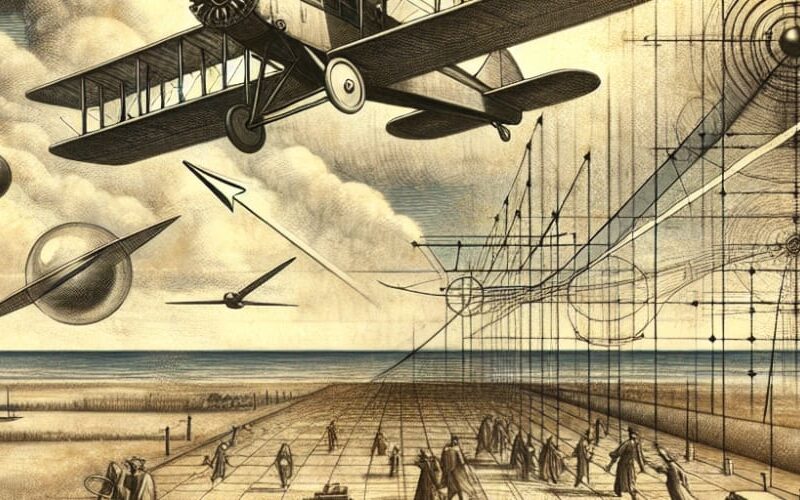Picture this: you’re sitting in an airplane, gazing out the window as the ground falls away beneath you. Suddenly, you’re struck by a thought: “How on earth does this enormous metal tube manage to stay in the air?” It’s a question that has captivated the minds of countless travelers and aviation enthusiasts alike. In this blog post, we’ll dive into the science behind the magic of flight and reveal the secrets that keep airplanes soaring high above the clouds.
To understand how airplanes stay in the air, we need to look at the four primary forces that act upon them:
- Lift: The upward force that opposes the weight of the airplane and keeps it airborne.
- Weight: The downward force caused by the pull of gravity on the airplane’s mass.
- Thrust: The forward force generated by the airplane’s engines, propelling it through the air.
- Drag: The backward force created by air resistance, which opposes the airplane’s motion.
When an airplane is in steady flight, these four forces are perfectly balanced. Lift equals weight, and thrust equals drag. But how exactly does an airplane generate lift? The answer lies in the shape of its wings.
The key to an airplane’s ability to fly lies in the ingenious design of its wings. An airplane’s wings are shaped like an airfoil – they are curved on the top and flatter on the bottom. When the airplane moves forward, the air flowing over the curved upper surface of the wing moves faster than the air flowing under the flatter bottom surface.
This difference in air speed is explained by Bernoulli’s principle, which states that as the speed of a fluid (in this case, air) increases, its pressure decreases. The faster-moving air above the wing creates an area of low pressure, while the slower-moving air beneath the wing maintains a higher pressure.
The result? The higher-pressure air beneath the wing pushes the airplane upward, generating lift and allowing the airplane to overcome its weight and stay aloft.
Pilots can control an airplane’s lift and thrust to make it climb, descend, or change speed. By adjusting the angle of the wings (known as the angle of attack), pilots can increase or decrease lift. Tilting the nose of the airplane upward increases the angle of attack, generating more lift for climbing. Tilting the nose downward has the opposite effect, reducing lift and causing the airplane to descend.
Thrust is controlled by adjusting the power output of the airplane’s engines. Increasing thrust allows the airplane to accelerate and climb, while reducing thrust causes the airplane to slow down and descend.
The ability of airplanes to stay in the air is a testament to the incredible power of human ingenuity and our understanding of the natural world. By harnessing the principles of aerodynamics, we have created machines that can defy gravity and transport us across vast distances in a matter of hours.
So, the next time you find yourself marveling at an airplane soaring overhead, take a moment to appreciate the complex interplay of forces that make it all possible. And if someone asks you, “How do airplanes stay in the air?” you’ll be ready with an explanation that’s both fascinating and scientifically sound.
In conclusion, the science behind airplanes staying aloft is a beautiful example of how we can use our understanding of the natural world to achieve seemingly impossible feats. By mastering the principles of lift, weight, thrust, and drag, we have unlocked the ability to explore the skies and connect people across the globe.
So, as you take your next flight, sit back, relax, and marvel at the incredible journey you’re embarking upon. Embrace the miracle of flight and the awe-inspiring science that makes it all possible. And who knows? You might just inspire the next generation of aviators and aeronautical engineers to reach for the skies and push the boundaries of what we believe to be possible.
Source link
lol

